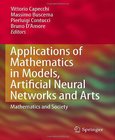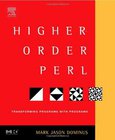Artificial Higher Order Neural Networks
For Economics and Business

Book Details:
| Publisher: | IGI Global |
| Series: | IGI Global |
| Author: | Ming Zhang |
| Edition: | 1 |
| ISBN-10: | 1599048973 |
| ISBN-13: | 9781599048970 |
| Pages: | 542 |
| Published: | Jul 28 2008 |
| Posted: | Nov 19 2014 |
| Language: | English |
| Book format: | |
| Book size: | 9.06 MB |
Book Description:
Artificial Higher Order Neural Networks (HONNs) significantly change the research methodology that is used in economics and business areas for nonlinear data simulation and prediction. With the important advances in HONNs, it becomes imperative to remain knowledgeable about its benefits and improvements. Artificial Higher Order Neural Networks for Economics and Business is the first book to provide practical education and applications for the millions of professionals working in economics, accounting, finance and other business areas on HONNs and the ease of their usage to obtain more accurate application results. This source provides significant, informative advancements in the subject and introduces the concepts of HONN group models and adaptive HONNs.
Download Link:
Related Books:
Artificial Neural Networks
In Real-Life Applications
Artificial Neural Networks in Real-Life Applications offers an outlook on the most recent works in the field of artificial neural networks (ANN). It includes theoretical developments of the ANN area and applications of these systems, using intelligent characteristics for adaptability, automatic learning, classification, prediction and even artistic creation....
Applications of Mathematics in Models, Artificial Neural Networks and Arts
Mathematics and Society
The book shows a very original organization addressing in a non traditional way, but with a systematic approach, to who has an interest in using mathematics in the social sciences. The book is divided in four parts: (a) a historical part, written by Vittorio Capecchi which helps us understand the changes in the relationship between mathematics and sociology by analyzing the mathematical models of Paul F. Lazarsfeld, the model of simulation and artificial societies, models of artificial neural network and considering all the changes in scientific paradigms considered; (b) a part coordinated by Pier Luigi Contucci on mathematical models that consider the relationship between the mathematical models that come from physics and linguistics to arrive at th...
Higher-Order Perl
Transforming Programs with Programs
Most Perl programmers were originally trained as C and Unix programmers, so the Perl programs that they write bear a strong resemblance to C programs. However, Perl incorporates many features that have their roots in other languages such as Lisp. These advanced features are not well understood and are rarely used by most Perl programmers, but they are very powerful. They can automate tasks in everyday programming that are difficult to solve in any other way. One of the most powerful of these techniques is writing functions that manufacture or modify other functions. For example, instead of writing ten similar functions, a programmer can write a general pattern or framework that can then create the functions as needed according to the pattern. For sev...
2007 - 2021 © eBooks-IT.org



